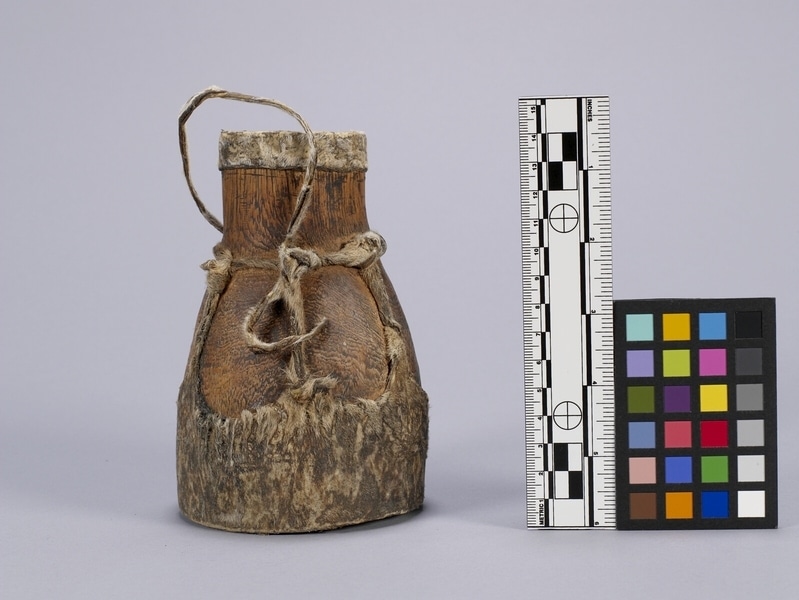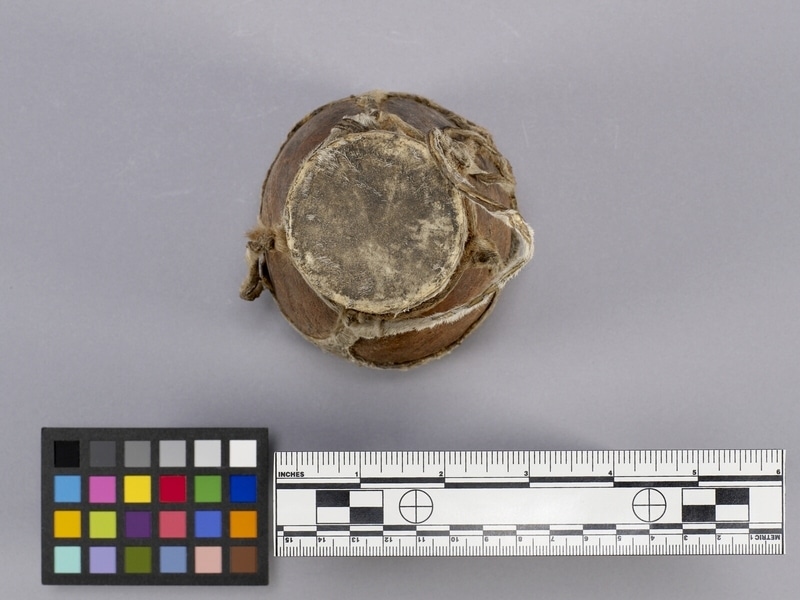Container Item Number: Aj126 from the MOA: University of British Columbia


Description
Container with flat wide bottom that has a narrowing neck and flat smaller top. Camel hide with brown white hair still on it, covering the bottom connected with five longer strips to a narrowed neck where a ring of leather is tied. Cap is made from hide connected with handle.
History Of Use
Container (epure or akgitum) used to store fat for cosmetic or domestic uses. Types of fat stored in the containers are: emunyen, butterfat (akidetet), ghee (akimet), and bone marrow (akimet a akoit). Emunyen (goat or cattle fat mixed with ochre) is used by women for decorative purposes, moisturizing, relieving chafing, and preventing body lice. Necklaces are also coated in it. Butterfat and ghee are used as a calorie-dense source of key nutrients and minerals. It could be stored for longer portions of time, and could be eaten on its own or used in preparation of other foods; bone marrow was particularly nutritious. Fat from butchered animals was also stored in these containers, and could be heated to be used as a cooking oil.
Cultural Context
storage
Specific Techniques
The wood used is likely from the species delonix elata, called ekuruchanait by the Turkana people. The skin composing the lid, bottom of the container, and handles of the container would have been harvested through the process of akiyeng, meaning "to skin with a knife". Skin can also be harvested through abutun, the processing of "pulling". The skin was likely bound to the wood with the use of a thick needle used in leather working, called an emutu or ngimutun. These skills are mostly known to women since they are the principal creators of containers.
Item History
- Made in Kenya before 1978
- Collected during 1978
- Owned by Marta Friesen before March 3, 1981
- Received from Marta Friesen (Seller) and Museum of Anthropology Shop Volunteers (Funding source) on March 3, 1981
What
Who
- Culture
- Turkana
- Previous Owner
- Marta Friesen
- Received from
- Marta Friesen (Seller) and Museum of Anthropology Shop Volunteers (Funding source)
Where
- Holding Institution
- MOA: University of British Columbia
- Made in
- Kenya
When
- Creation Date
- before 1978
- Collection Date
- during 1978
- Ownership Date
- before March 3, 1981
- Acquisition Date
- on March 3, 1981
Other
- Condition
- good
- Accession Number
- 0705/0034